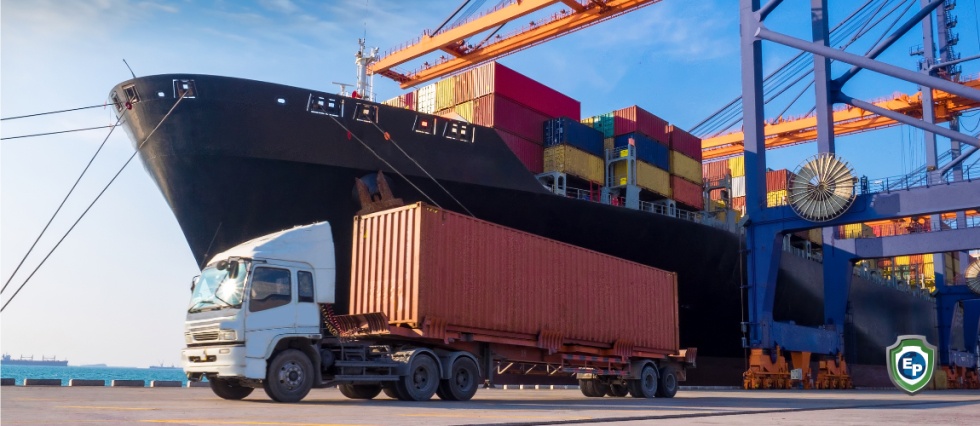Trade Data Monitor’s Top 5 Trade Trends Going Into 2023
The world was rocked in 2022 by Russia’s invasion of Ukraine, punishing inflation, and slackening demand in the U.S. and Europe.

The world was rocked in 2022 by Russia’s invasion of Ukraine, punishing inflation, and slackening demand in the U.S. and Europe. That’s dampened expectations for exports and imports in 2023. Global trade growth will slow to 1%, according to the World Trade Organization, because of inflation, higher interest rates, weaker demand in the U.S. and Europe, protectionism, and a leveling-out after recovery from the Covid-19 pandemic. The world will have a difficult time fully recovering from this current slump until it licks inflation. According to the WTO, “energy prices rose 78% year-on-year in August while food prices were up 11%, grain prices were up 15% and fertilizer prices were up 60%.” But global trade, if anything, offers some hope. The $9 trillion global logistics industry has proven that it’s much more resilient than national economies, and practically unbreakable when it comes to delivering a box of watches, apples of shoes from anywhere in the world to anywhere else in the world.
Here are Trade Data Monitor’s top 10 ongoing trade trends at the start of 2022:
1. The Post-Covid Trade Bump is Over
In 2022, global trade recovered from the Covid-19 slump. When all the numbers are tallied, it’s expected to increase 3.5% over 2021, according to the WTO. Governments handed out stimulus payments to their citizens that they used to buy consumer goods. Now that money is spent and inflation is biting into their budgets, causing a sharp shrinking in spending that’s deflating global trade. The WTO notes that imports will decline in different parts of the world for different reasons. In Europe, higher energy prices due to the war in Ukraine. In the United States, “monetary policy tightening will hit interest-sensitive spending in areas such as housing, motor vehicles and fixed investment.” China “continues to grapple with COVID-19 outbreaks and production disruptions paired with weak external demand.” And for developing countries, “growing import bills for fuels, food and fertilizers could lead to food insecurity and debt distress.” Rising energy bills will cause consumers to spend large percentages of their paychecks driving their cars and heating their homes, and less money on shoes, toys and gadgets.
2. U.S. is Exporting More Gas to Europe
Energy will dominate global commodities markets. Russia’s invasion of Ukraine and subsequent geopolitical maneuvering have remade energy supply chains. Russian oil and gas now flow to China, India and Turkey, instead of Europe, which is discovering its appetite for U.S. liquid natural gas from Texas and Appalachian fracking wells. Thanks to new infrastructure on the East Coast and the Gulf of Mexico, the U.S. has steadily been increasing its gas export capacity, and sending more LNG tankers to Le Havre, Antwerp, and Rotterdam. U.S. gas exports to France, for example, increased 518% to $6.8 billion in the first 10 months of 2022, up from $1.1 billion over the same time period in 2021. By quantity, they rose 282.6% to 26.4 million cube meters, from 6.9 million cube meters. The energy trade across the Atlantic will reinforce the U.S.-EU relationship, reorient global markets, and provide investment to further boost production in the U.S.

3. Russia is Selling its Oil and Gas to China and India
Europe’s ban on importing energy from Russia has forced Moscow to look elsewhere to customers. Although Russia has stopped disclosing its trade statistics, TDM’s dataset of other countries allows us to see where Russian oil and gas are going.
China’s imports of oil and gas from Russia increased 62% year-on-year to $77.8 billion in the first 11 months of 2022, from $48 billion over the same time period in 2021. India ramped up its energy imports from Russia 592% year-on-year to $22.9 billion from $3.3 billion over the first 10 months of 2022. China has also started processing and exporting oil. Chinese exports of petroleum products, mainly fuels, rose 46.6% by volume in November to 6.1 million tons. Because of price increases, by value they increased 98% to $5.4 billion.
4. China is Losing Export Markets to Other Asian Countries
Political tensions with China have spooked manufacturers who have been moving production to other Asian countries. In November, Chinese exports of high-tech products, for example, declined 23.6% to $74.8 billion. Exports of mobile phones were down 33.3% to $11 billion. Exports of toys declined 21.7% to $3.6 billion, and shipments of textiles fell 14.8% to $11.3 billion. There was a notable exception: Exports of motor vehicles, a burgeoning industry in China, including the production of electric cars, surged 113.3% to $7.7 billion. Meanwhile, countries, like Vietnam, Singapore and Malaysia are grabbing markets China is ceding. Vietnamese exports, for example, rose 23% year-on-year to $185 billion over the first six months of 2022. Malaysia’s outward shipments increased 21% to $294.5 billion over the first 10 months of 2022.
5. China is Importing Fewer Commodities
As China’s manufacturing export economy loses some steam, its appetite for iron ore, nickel, copper and other industrial metals is slackening, and supply chains are migrating toward other big Asian economies like Vietnam, Malaysia and Singapore.
Chinese imports of iron ore fell 2.1% to 1.02 million tons over the first 11 months of 2022. Nickel imports shrank 10.1% to 37.4 million tons.
There were a few exceptions for commodities essential to the kind of mature industrial economy China has become. Copper imports, for example, rose 8.7% to 23.2 million tons.






Comments 0